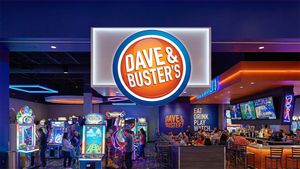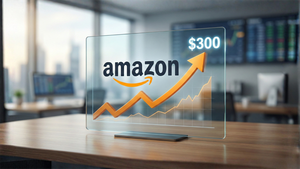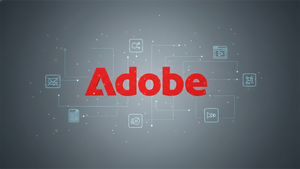
As the trading week draws to a close on Friday, September 26, 2025, Jim Cramer, the influential host of CNBC's "Mad Money," has once again offered his discerning insights into the stock market's immediate landscape. His top ten things to watch highlight a stark and growing bifurcation in the U.S. economy: a booming, AI-driven technological sector on one side, and a struggling consumer-facing economy grappling with the persistent weight of high interest rates on the other. Investors are urged to navigate this divide carefully, as Cramer points to both resilient growth opportunities and significant areas of concern.
Cramer's commentary underscores a critical juncture for the market, where the robust performance of technology and artificial intelligence companies is masking underlying weaknesses in broader consumer spending. He emphasized that the impressive 3.8% GDP growth reported in Q2 is largely concentrated in tech and AI, which have collectively driven 75-80% of the S&P 500's returns and earnings growth since late 2022. This concentration of wealth and growth presents a challenging environment for diversification, pushing investors to be highly selective and to recognize that not all sectors are participating equally in the current economic expansion.
The Two-Speed Economy: AI's Ascent vs. Consumer's Retreat
Jim Cramer's Friday watchlist is a direct reflection of his "bifurcated economy" thesis. He passionately articulated a "tremendous economy" fueled by the advancements in artificial intelligence, contrasting it sharply with an "anemic economy" directly tied to the consumer, which he believes is deteriorating daily due to elevated interest rates. This divide is not just theoretical; it's manifesting in corporate earnings and stock performance across various sectors.
Key players in the AI realm, such as Microsoft (NASDAQ: MSFT) and IBM (NYSE: IBM), continue to be Cramer's darlings. He cited an optimistic analyst note from Ben Reitzes at Melius Research regarding Microsoft, suggesting a "catch-up trade" driven by its strong cloud computing (Azure) business, AI agents, and partnership with OpenAI. IBM, a long-time Cramer favorite, was lauded for its leadership in quantum computing, a technology he believes "really matters." Oracle (NYSE: ORCL) also received a nod for its strategic shift towards cloud infrastructure and AI, led by new co-CEOs directly linked to these growth areas. Even Apple (NASDAQ: AAPL) continues to defy doubters, with Cramer pointing to strong demand evidenced by store openings and analyst predictions for the iPhone 17, suggesting its ecosystem resilience can offset broader AI expectations.
Conversely, the consumer-facing sector is facing significant headwinds. Cramer highlighted the detrimental effect of high interest rates, stating that things will "only get worse" for this segment without rate cuts. Homebuilders like KB Home (NYSE: KBH) are building fewer homes because "rates are simply too high." The used car market is also flashing red, with CarMax (NYSE: KMX) reporting "awful" results, causing its stock to plunge 20% and signaling potential weakness for new car sales. Furthermore, Cramer expressed deep concern about "froth" in speculative stocks, particularly crypto miners like Bitmine Immersion Technologies (OTC: BMNR), which he advised investors to avoid, favoring direct investment in cryptocurrencies instead. He noted that only 6 out of 55 U.S.-listed stocks that rallied 50% in September were profitable, a statistic he deemed "ridiculous" and "worrisome."
Navigating the Winners and Losers in a Divided Market
The current economic environment, as described by Jim Cramer, creates a clear delineation between potential market winners and those likely to struggle. Companies firmly entrenched in the artificial intelligence and advanced technology sectors are positioned for continued growth, while those heavily reliant on discretionary consumer spending, especially amidst high interest rates, face an uphill battle.
On the winning side, Microsoft (NASDAQ: MSFT) stands out due to its dominant cloud presence (Azure) and aggressive AI integration through OpenAI. IBM (NYSE: IBM) is a long-term play for Cramer, betting on its leadership in quantum computing and enterprise AI solutions. Oracle (NYSE: ORCL) is making strategic pivots towards cloud and AI infrastructure, positioning itself for future growth. Apple (NASDAQ: AAPL) demonstrates remarkable resilience, with strong product demand and ecosystem loyalty insulating it from broader economic woes. In the travel and leisure sector, Royal Caribbean (NYSE: RCL) and Expedia (NASDAQ: EXPE) were singled out, with Royal Caribbean posting superb Q2 earnings and Expedia being deemed "very cheap" with growing margins. Capital One (NYSE: COF) is seen as a financial standout following its tie-up with Discover Bank. Cramer also maintains bullish stances on Starbucks (NASDAQ: SBUX) for its restructuring efforts, Dutch Bros (NYSE: BROS) for its growth potential, and Generac (NYSE: PWR) as a "great long-term own" due to grid issues and generator demand. Recursion Pharmaceuticals (NASDAQ: RXRX) is highlighted as an AI drug discovery stock backed by Nvidia, indicating the broadening application of AI.
Conversely, the consumer-facing sector is replete with potential losers. CarMax (NYSE: KMX) epitomizes this struggle, with "awful" results reflecting the pain in the used car market, a bellwether for consumer health. Homebuilders like KB Home (NYSE: KBH) are directly impacted by high mortgage rates, leading to fewer new constructions. Cramer also cautioned about general retailers, many of whom still carry "too many workers, too many stores," struggling to compete with scale players like Walmart or Costco. Perhaps most concerning for Cramer are speculative stocks and crypto miners such as Bitmine Immersion Technologies (OTC: BMNR), which he views as "froth" that has likely "overshot what they might be worth," advising extreme caution due to their lack of profitability and high volatility.
Broader Implications and Market Undercurrents
Cramer's watchlist for Friday, September 26, 2025, does more than just highlight individual stocks; it paints a picture of broader industry trends and significant market undercurrents. The dominance of AI is not merely a sector-specific phenomenon but a transformative force reshaping economic growth, corporate strategies, and even national infrastructure. This event fits squarely into the ongoing narrative of technological disruption, reminiscent of past internet booms, but with AI's pervasive nature promising even wider ripple effects.
The relentless buildout of data centers by tech giants like Meta, constructing multi-billion-dollar facilities requiring significant new power plants, underscores a critical emerging challenge: the immense strain on the energy grid. Cramer foresees "fights between consumers and tech" over electricity, and a growing sentiment questioning the "wisdom" of such rapid expansion. This could lead to regulatory scrutiny on energy consumption and infrastructure development, potentially affecting utilities, construction, and even the pace of AI deployment. Furthermore, the persistent impact of high interest rates on the consumer sector has wider implications for monetary policy. Despite strong GDP numbers, the deteriorating consumer health could intensify calls for the Federal Reserve to consider rate cuts, potentially shifting the central bank's stance sooner than anticipated to avert a deeper consumer-led slowdown. Historically, bifurcated markets have often preceded broader economic shifts, where the resilience of one sector cannot indefinitely offset the struggles of another, eventually leading to either a broader uplift or a more widespread correction.
What Comes Next: Navigating the Crossroads
Looking ahead, the market is at a critical juncture, with Jim Cramer's insights for Friday, September 26, 2025, offering a roadmap for both short-term navigation and long-term strategic thinking. The immediate future will likely see continued divergence, with AI-driven tech stocks maintaining momentum while consumer-dependent sectors remain under pressure.
In the short term, investors will be closely watching economic data for any signs of consumer improvement or further deterioration. Any hint of a Federal Reserve pivot on interest rates could provide a much-needed boost to the struggling consumer economy, potentially leading to a broader market rally beyond the tech sector. Companies heavily invested in AI are expected to continue their strong performance, but the immense energy demands of this growth could spark new market opportunities in sustainable energy, grid infrastructure, and energy efficiency technologies. Long-term possibilities include a sustained AI-led economic expansion, but also the potential for regulatory interventions regarding energy consumption and market concentration. Strategic pivots will be crucial for companies in the consumer sector, requiring adaptations in business models, cost structures, and customer engagement to survive the high-rate environment. Market opportunities may emerge in overlooked value stocks within the consumer sector if a recovery materializes, while challenges will involve identifying true AI beneficiaries amidst speculative froth and managing portfolio risk in a volatile, bifurcated market. Potential scenarios range from a "soft landing" where AI growth eventually lifts the broader economy, to a more challenging environment if consumer weakness persists and high rates stifle overall economic expansion.
Wrap-Up: Key Takeaways and Future Watchpoints
Jim Cramer's "Top 10 Things to Watch" for Friday, September 26, 2025, provides a crucial snapshot of a market defined by a stark economic divide. The primary takeaway is the powerful, transformative force of artificial intelligence, which is driving significant growth and returns in the tech sector, creating clear winners like Microsoft, IBM, and Oracle. However, this growth is juxtaposed against a struggling consumer economy, severely impacted by high interest rates, leading to challenges for companies like CarMax and KB Home.
Moving forward, investors must remain highly discerning, recognizing that a rising tide is not lifting all boats equally. The market will continue to assess the staying power of AI's growth against the backdrop of consumer resilience. Key watchpoints in the coming months include inflation data and the Federal Reserve's stance on interest rates, as any shift could significantly alter the trajectory of the consumer economy. Furthermore, the energy demands of the AI boom will become an increasingly important factor, potentially creating new investment opportunities in infrastructure and green energy, but also posing regulatory and societal challenges. Investors should focus on companies with strong balance sheets, clear competitive advantages in the AI space, and those demonstrating adaptability in the face of economic headwinds, while exercising extreme caution with speculative and highly leveraged consumer-facing businesses.
This content is intended for informational purposes only and is not financial advice






